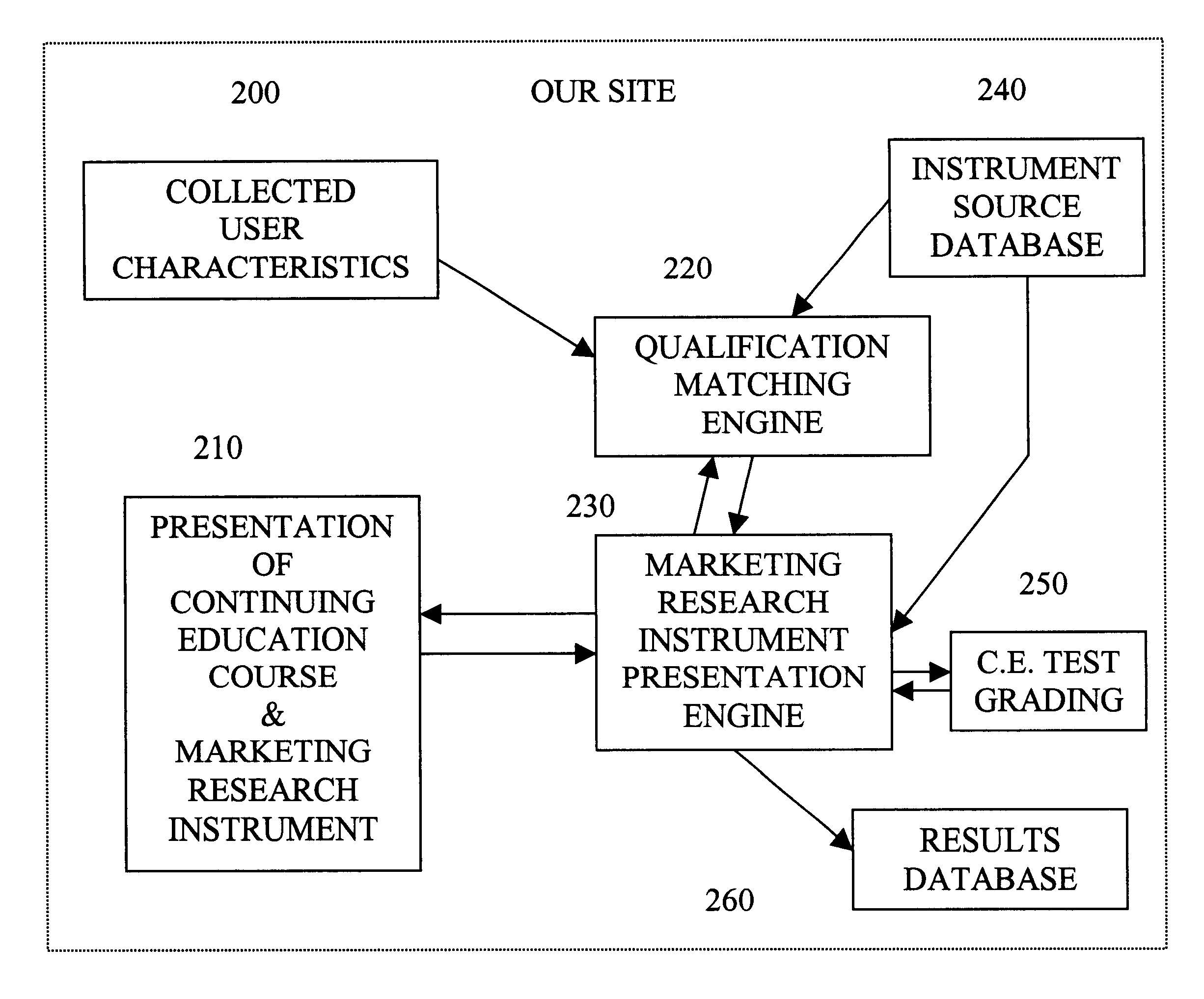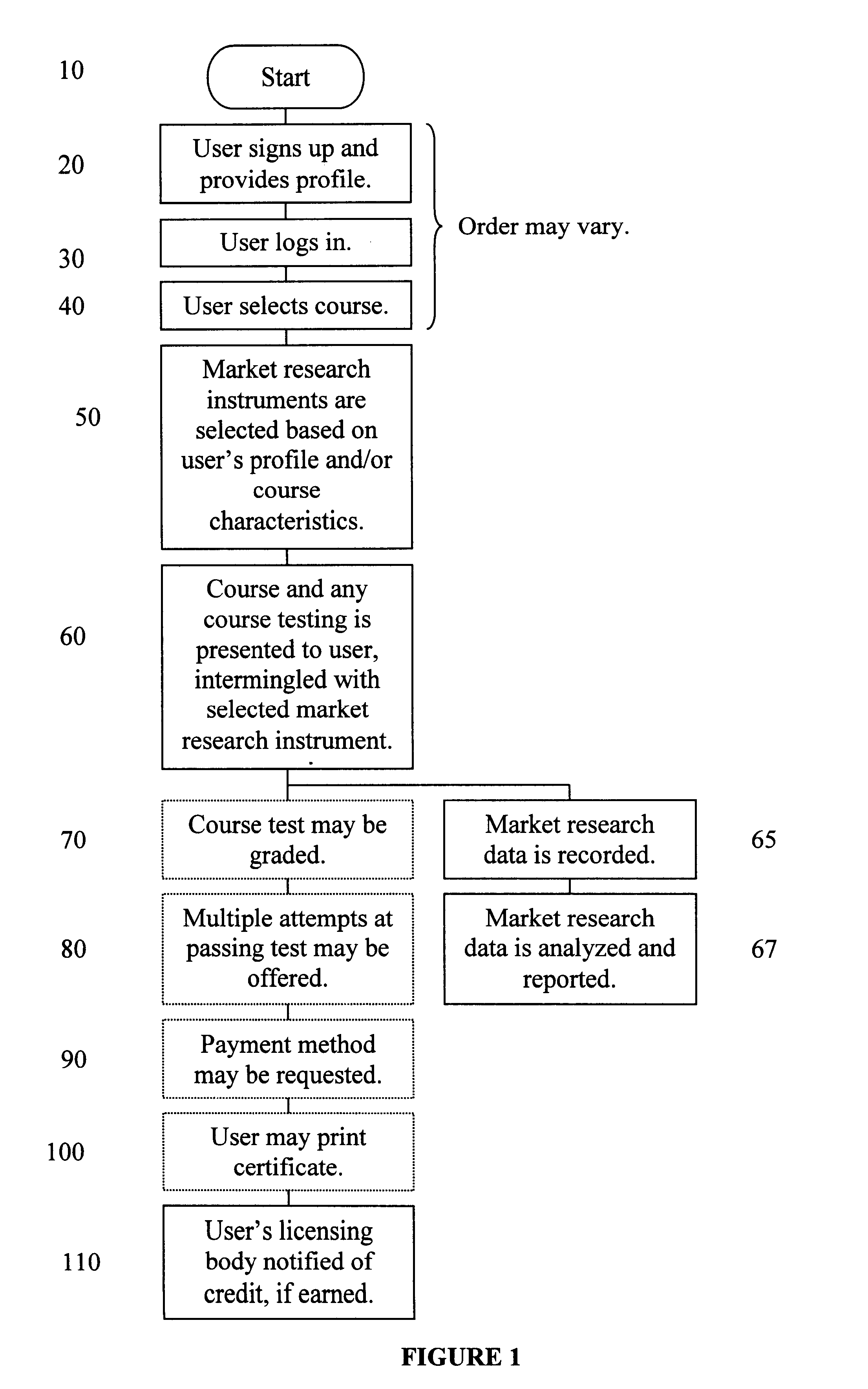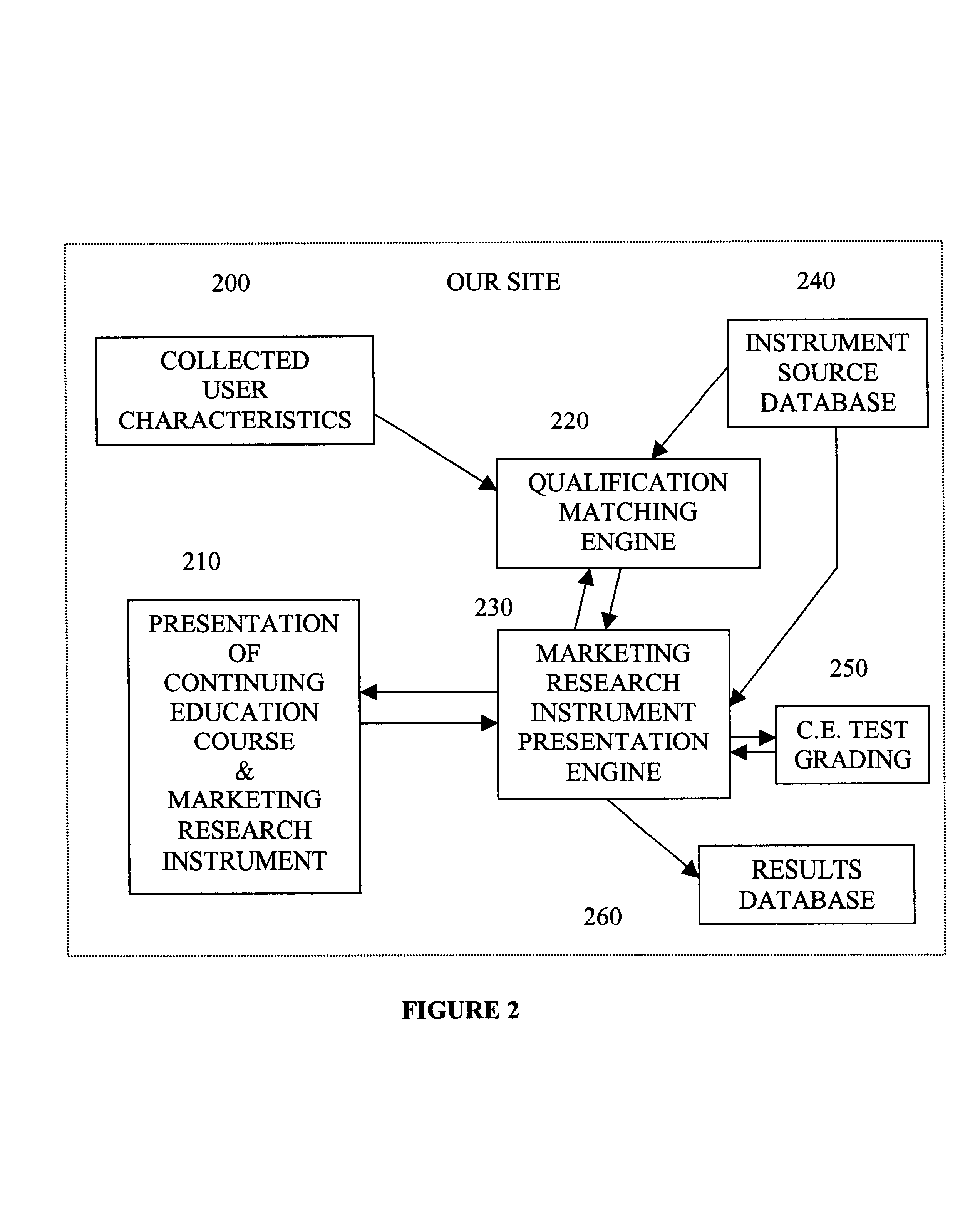Method and apparatus for market research using education courses and related information
a market research and education course technology, applied in the field of methods and equipment for market research using education courses and related information, can solve the problems of inability to be accredited, inherently non-random yet frequently used selection methods, and difficulty in obtaining information, so as to reduce the problem and concerns about the accuracy of identity and relevant characteristics, improve identification, selection, incentives and responsiveness of the study sample, and reduce the problem of bias
- Summary
- Abstract
- Description
- Claims
- Application Information
AI Technical Summary
Benefits of technology
Problems solved by technology
Method used
Image
Examples
Embodiment Construction
One embodiment of the present invention uses the information needed to provide a continuing education course as a basis for electronically identifying and qualifying the individual for available marketing research studies. This embodiment matches a study to the individual and other characteristics, and presents the instrument of the marketing research study in relation to the continuing education course. This embodiment furthermore applies continuing education as an incentive mechanism for market research. This embodiment presents market research studies within a continuing education venue. This embodiment provides a mechanism and data packet format for transmission of evidence that an individual has successfully completed a continuing education course on-line.
In another embodiment, for an individual to obtain continuing education credits, the provider of the continuing education course may obtain the identity of the individual and the course the individual intends to take. As shown...
PUM
 Login to View More
Login to View More Abstract
Description
Claims
Application Information
 Login to View More
Login to View More - R&D
- Intellectual Property
- Life Sciences
- Materials
- Tech Scout
- Unparalleled Data Quality
- Higher Quality Content
- 60% Fewer Hallucinations
Browse by: Latest US Patents, China's latest patents, Technical Efficacy Thesaurus, Application Domain, Technology Topic, Popular Technical Reports.
© 2025 PatSnap. All rights reserved.Legal|Privacy policy|Modern Slavery Act Transparency Statement|Sitemap|About US| Contact US: help@patsnap.com



